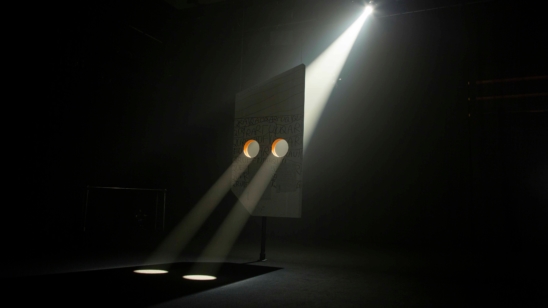Listening to Stone
[Exhibition Observation | Listening to the Voice of Stone]
We will be hosting Gaku Kurokawa’s “Listening to Stone”, co-sponsored by ART 360°, an exhibition archive project, and MATSUO MEGUMI +VOICE GALLERY pfs/w.
Through the process of exploring sound, Kurokawa has uncovered its true essence in the forms and actions which emerge through contact between one’s own body and external environments such as nature, cities, and society. Kurokawa’s unconventional activities, including sculpture, music, and performance, can be conceived of as an attempt to capture the intangible sculpture of the acoustic experience itself.
[Hosting the Exhibition]
Two exhibits coexist in this exhibition.
The first is the exhibition sponsored by this gallery, “Art Archeology: Forgotten Objects/Remembered Things”.
The second is the exhibition cosponsored by ART360°, “Listening to the Voice of Stone” (Gaku Kurokawa).
In “Art Archeology”, 4 exhibitors demonstrate how they confront things and time.
Hayato Nishimura locates ancient burial mounds which seem upon first glance to exist completely unrelated to the lives of contemporary humans, and then records in photos the landscape which is created by both parties.
Teruhisa Yamato polishes to a shine and gives names to things which are born out of coincidence during the process of creating Japanese-style mirrors, sacred mirrors, and Chinese magic mirrors,
In addition, damaged cast tools which would ordinarily be discarded have been used as household goods.
Archaeologist Nakamura Oki and hardware store owner/artist Furukawa Katsuya compare objects whose uses are unknown, or tools which have disappeared from daily life, with materials such as Jomon pottery fragments, stones, etc., to create a mix of over 100 exhibits.
Furukawa’s artworks, which were inspired by tools, are also included in this.
“Listening to the Stone” is a part of the “exhibition observation” by ART360°, an exhibition archive project. The purpose of this exhibition is to record a detailed video showing the process of unloading approx. 2 tons of stone from a vehicle, transporting it down a public road, and arranging it using only simple tools and human strength.
Gaku Kurokawa’s works are devices which invite physical experiences.
The two exhibitions, which were initially planned with no relation to each other, had something in common: an interest in the vastness of time, measured in units of 10,000 years, 1,000 years, and 100 years.
This exhibition is an attempt by each of the exhibitors to draw out a story from unknown objects. It is also an attempt to create a landscape in which the story includes the exhibition. (Voice Gallery)
Collaborators: TS Gallery, Ritsumeikan University




